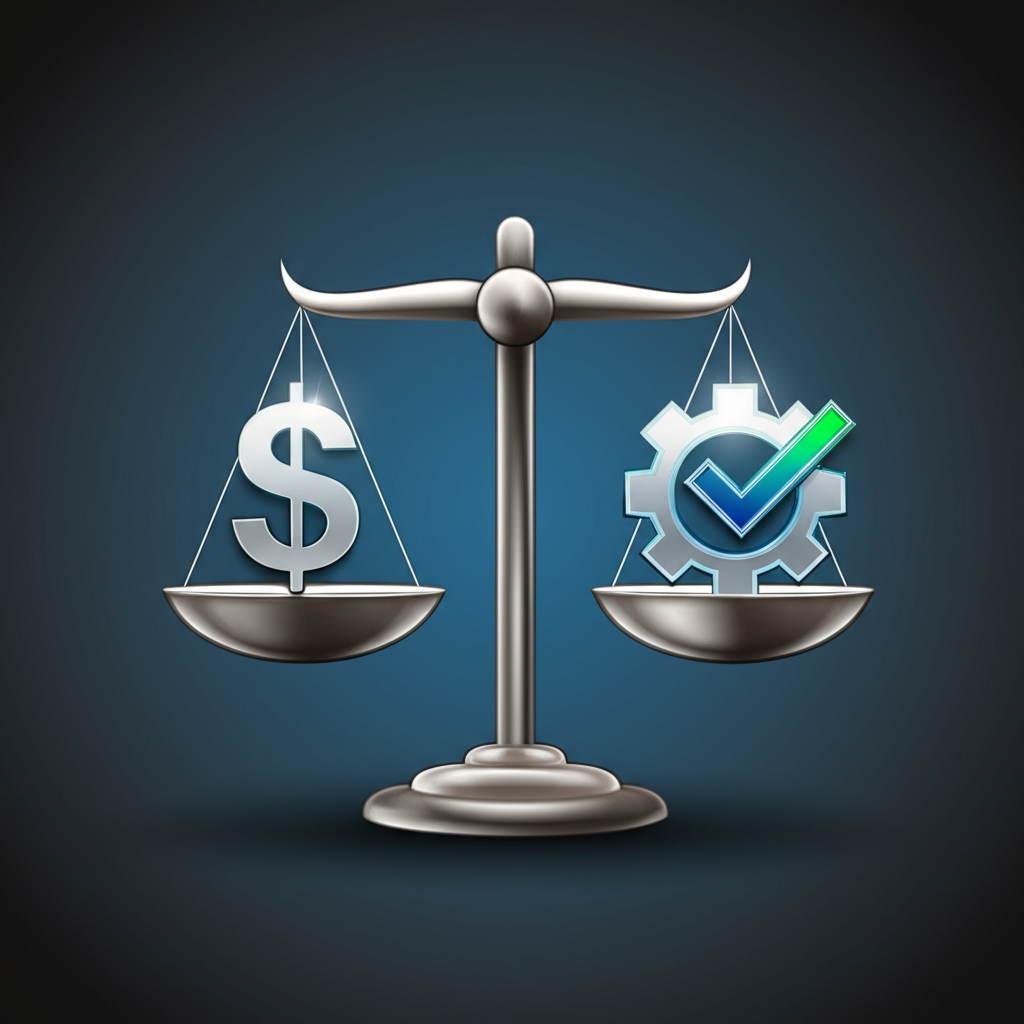Beyond Price: How to Master Comparing CNC Machining Quotes

TL;DR
Comparing CNC machining quotes effectively requires looking beyond the total price. A thorough evaluation involves analyzing the breakdown of costs, including materials, setup fees, and machining time, alongside crucial factors like supplier certifications, lead times, and post-processing services. This ensures you select a partner that offers the best overall value, not just the lowest initial cost.
Deconstructing the CNC Machining Quote
Receiving a CNC machining quote can feel overwhelming, as it contains multiple line items that contribute to the final price. To make an informed decision, it's essential to understand what each component represents. A transparent and detailed quote is a sign of a professional supplier, giving you a clear picture of where your investment is going. A comprehensive quote typically breaks down costs into several key categories.
Understanding these elements demystifies the pricing and empowers you to have more substantive conversations with potential suppliers. According to an analysis on interpreting quotes, a detailed breakdown should be expected and reviewed carefully. LongSheng Manufacturing emphasizes that this clarity is directly related to final product quality and delivery. Here are the most common components you'll find:
- Raw Material Costs: This is the price of the metal or plastic block (blank) from which your part will be machined. The cost varies significantly based on the material type (e.g., aluminum 6061 vs. titanium) and the amount required. As noted by TMC Technologies, softer alloys are often faster to machine, which can reduce overall costs.
- Setup Fees: This is a one-time charge covering the preparation of the CNC machine for your specific job. It includes tasks like programming the machine with your CAD file, preparing fixtures to hold the part, and calibrating the tools. These costs are more significant for small batches or prototypes, as they are spread over fewer units.
- Machining Time: This cost is often calculated at an hourly rate and represents the time the CNC machine is actively cutting your part. This rate, which can range from $35 to over $120 per hour, covers machine operation, maintenance, energy, and the skilled operator's time.
- Tooling Costs: If your design requires specialized cutting tools that the machine shop doesn't have in its standard inventory, you may see a separate charge for tooling. This is more common for parts with highly complex or unusual geometries.
- Post-Processing and Finishing: This category includes any services performed after the initial machining is complete. Common examples include deburring (removing sharp edges), anodizing, powder coating, polishing, or bead blasting. These steps are crucial for the part's final appearance and performance.
Key Factors That Drive Machining Costs
The final price on a CNC machining quote is not arbitrary; it's the result of several interacting variables related to your design and requirements. Understanding these cost drivers allows you to optimize your part for manufacturability, potentially reducing expenses without compromising function. By making strategic design choices, you can directly influence the machining time and complexity, which are major components of the overall cost.
Each factor presents a trade-off between performance and price. For example, while extremely tight tolerances might be necessary for a critical aerospace component, they might be an unnecessary expense for a simple bracket. Evaluating these factors helps you find the right balance for your project.
Here are the primary factors that influence CNC machining costs:
- Part Complexity and Geometry: The more intricate a part's design, the longer it takes to machine. Features like deep pockets, sharp internal corners, thin walls, and complex curves require more advanced machine programming and longer run times. Multi-axis machining can create these shapes but comes at a higher hourly rate.
- Material Selection: The choice of material impacts cost in two ways: the price of the raw material itself and its machinability. Harder materials like stainless steel or titanium are more expensive and take longer to cut than softer materials like aluminum 6061 or plastics like ABS, as explained by Binho.
- Tolerances and Precision: Tighter tolerances demand more precise machining, specialized measurement tools, and often slower cutting speeds to ensure accuracy. As Hone-All points out, if a required tolerance is tighter than standard industry margins, additional processes like honing may be needed, which adds to the project's cost.
- Order Quantity (Volume): The number of parts you order has a significant impact on the per-unit cost. For larger production runs, the initial setup costs are distributed across many units, leading to a lower price per part. In contrast, one-off prototypes have a high per-unit cost because the single part must absorb the entire setup fee.
- Surface Finish: The required smoothness or texture of the final part's surface affects the cost. A standard machine finish is the most affordable, while smoother finishes require additional steps like bead blasting, polishing, or anodizing, each adding to the final price.

A Practical Framework for Apples-to-Apples Comparison
Simply placing quotes side-by-side and choosing the lowest number is a common mistake. A true apples-to-apples comparison requires a structured approach that considers all aspects of the offer. This ensures you're evaluating the total value, including quality, reliability, and delivery, not just the initial price tag. Creating a simple spreadsheet can help you organize the information and compare suppliers consistently across key criteria.
Follow these steps for a more accurate and effective evaluation:
- Verify All Specifications Match: Before comparing prices, confirm that every supplier has quoted based on the exact same information. Check that the material grade, tolerances, surface finishes, and any other critical specifications listed on the quote match your original request for quote (RFQ) and technical drawings. As highlighted by Standard Machining, inconsistencies in material specs can lead to hidden costs or part failures later.
- Analyze the Cost Breakdown: Look beyond the total price and examine the individual line items. Does one supplier have a much higher material cost but lower machining time? This could indicate they are using a more expensive material source or a more efficient machine. Understanding this breakdown helps you identify potential discrepancies and ask informed questions.
- Evaluate Lead Times: The quoted lead time is a critical factor. A cheaper quote with a six-week lead time may not be a good value if you need the parts in two weeks. Consider whether the supplier's delivery schedule aligns with your project timeline and be wary of quotes that seem too good to be true, as they may come with unrealistic delivery promises.
- Assess Supplier Capabilities and Certifications: A reliable supplier should have the right equipment and quality control processes for your project. Look for relevant certifications, such as ISO 9001 for quality management or AS9100 for aerospace. For instance, some projects require providers with specific capabilities. For those needing high-precision custom parts, a supplier like XTJ offers advanced 4 and 5-axis CNC machining and ISO 9001 certified quality, which are important indicators of capability you can find at their CNC machining services page.
- Consider Communication and Support: Pay attention to the supplier's responsiveness and clarity during the quoting process. A supplier who communicates well and answers your questions thoroughly is more likely to provide good support throughout the production process. This can be invaluable if issues arise later.
Beyond the Bottom Line: Identifying Hidden Costs and Quality Signals
The most attractive quote isn't always the best one. An unusually low price can be a red flag for cut corners, hidden fees, or subpar quality that will cost more in the long run through delays, rework, or part failure. Conversely, a higher price may reflect superior quality controls, better materials, and more reliable service. Learning to spot these indicators is crucial for mitigating risk and ensuring you receive parts that meet your standards.
Red Flags and Potential Hidden Costs
Be cautious when a quote seems significantly lower than others. Some suppliers may exclude necessary processes to make their initial bid more appealing, only to add charges later. Watch out for these common red flags:
- Vague or Incomplete Descriptions: If a quote lacks a detailed breakdown of costs or uses generic terms like “standard finishing” without specifying the process, ask for clarification.
- Omitted Post-Processing: Some low-cost quotes may not include essential steps like deburring, cleaning, or inspection. These can be added as extra charges later, inflating the final cost.
- Unrealistic Lead Times: A promise of extremely fast delivery at a low price can be a sign that the supplier may rush the job, compromising quality control.
- Poor Communication: A supplier who is slow to respond or provides unclear answers during the quoting stage may be difficult to work with once production begins.
Positive Quality Indicators
On the other hand, certain elements in a quote and in your interactions with a supplier can signal high quality and reliability. These factors often justify a slightly higher price and provide peace of mind:
- Detailed and Transparent Quoting: A comprehensive quote that breaks down all costs clearly shows the supplier is professional and has thoroughly reviewed your project.
- Quality Certifications: Certifications like ISO 9001 demonstrate a commitment to standardized quality management systems.
- Offers of DFM Feedback: A proactive supplier may offer Design for Manufacturability (DFM) feedback, suggesting minor design changes to improve the part or reduce costs. This shows expertise and a collaborative spirit.
- Clear Inspection Processes: Mention of specific quality control measures, such as First Article Inspection (FAI) reports or material certifications, indicates a rigorous approach to quality assurance.

Frequently Asked Questions
1. How much does CNC machining cost per hour?
The hourly rate for CNC machining varies widely, typically ranging from $35 to $200. The cost depends on the machine's complexity (a 3-axis mill is cheaper than a 5-axis one), the material being machined, and the skill of the operator. This rate generally covers machine operation, maintenance, and labor.
2. What is the hourly rate for a CNC machine?
The hourly rate for the machine itself is a core component of the overall machining cost. A common average is around $60-$75 per hour, but this can be higher for more advanced multi-axis machines. The total cost of a part is calculated by adding the raw material cost and any special tooling or finishing fees to the total machining time multiplied by this hourly rate.





